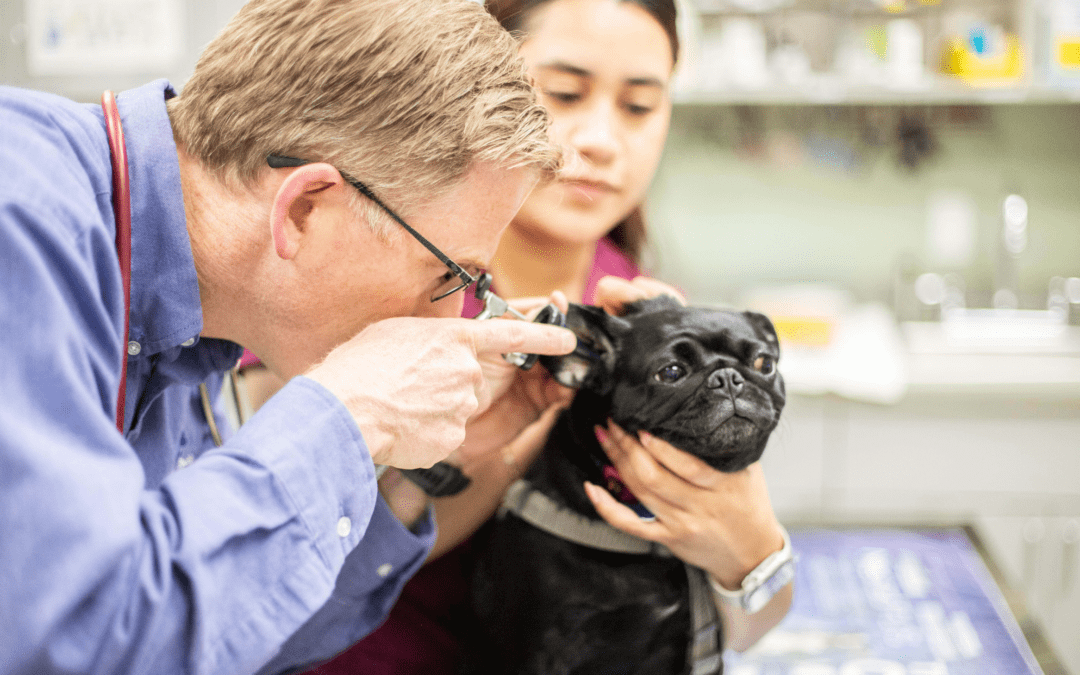It’s a concern of veterinary clinics everywhere: How to confront and deal with toxic employees influencing the clinic culture. Can you identify those individuals early? Even better, is there a way to prevent them from causing problems in the first place? This is the topic that the latest guests on our Simple, Interrupted podcast dove into. We sat down with Alyssa Mages, CVT of Empowered Veterinary Teams, and Dr. Phil Richmond, the Chief Medical and Well-Being Officer of Veterinary United and the 2021 FVMA Veterinarian of the Year. They provided insight on how to set up your clinic to prevent the accumulation of toxic employees and address those unwanted behaviors when they DO arise.
Fostering a psychologically safe workplace
Everyone strives to become that unicorn clinic where team members pull together and work with one another in a seamless unity. And that cohesion begins with a base of trust and civility. If everyone is willing to be open to growth and development opportunities, it fosters a learning environment where people are less likely to feel attacked or bullied.
Dr. Richmond encourages a policy of “honesty with empathy.” This helps everyone work as their authentic selves. They listen appreciatively when someone offers a correction—rather than fearing a “hit with a flamethrower” when they make a mistake.
“We’re our own worst critics,” Alyssa admits, “and it’s no fun to work if you’re surrounded by critics.” Being in a psychologically safe workplace helps everyone remember that they’re human. And when something goes wrong, your team helps steer you back to the positive instead of focusing on the negative. (Without overcorrecting into TOXIC positivity)
Recognizing a genuine “toxic employee”
It can be easy to single out destructive behaviors as evidence of a toxic employee. But, as a manager or team member, it’s crucial to understand where the negativity might come from. Because there’s a difference between a toxic employee and someone unwilling to change their attitude or behavior.
Alyssa recommends developing a rapport with your team members so you can approach them for an empathetic conversation. Rather than starting with a lecture of “this is wrong,” look for common ground to open a neutral dialogue. And don’t wait for an annual review to bring up problems! “No one wants a sense of visiting the principal’s office.”
Dr. Richmond reminds you also to be aware of the clinic environment. You want to set up an onboarding process for how to deal with employee problems from the beginning. If there’s no structure in place to course-correct issues, people will feel cornered or called out. And that can lead to resentment.
Acknowledging your clinic’s breaking point
There’s no “cut and dry” endpoint for when it’s time to separate a toxic employee from their position. But Dr. Richmond suggests you’ll see constant denial on their part despite your intervention, resource provision, and assistance. “Don’t put everything on your employee; you have to have an environment that allows them to flourish.”
Alyssa agrees, suggesting the person won’t acknowledge their contribution to the problem. And since everyone needs to remain honest about themselves, it’s time to part ways.
You have plenty of resources to help create fair and balanced employee behavior policies. And the more training you undertake, the better your clinic will be:
Everyone’s on an individual journey. And if you’re willing to create an environment of trust, civility, and honesty, you can help lower the risk of toxic behaviors.






